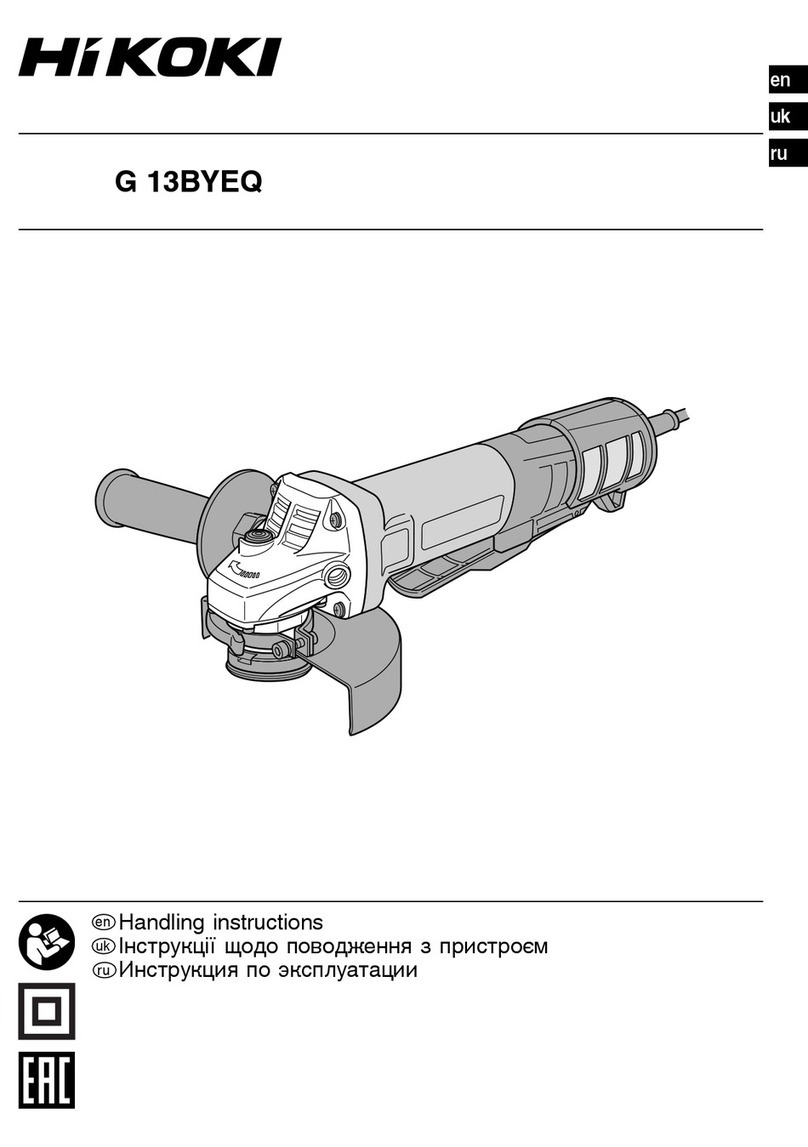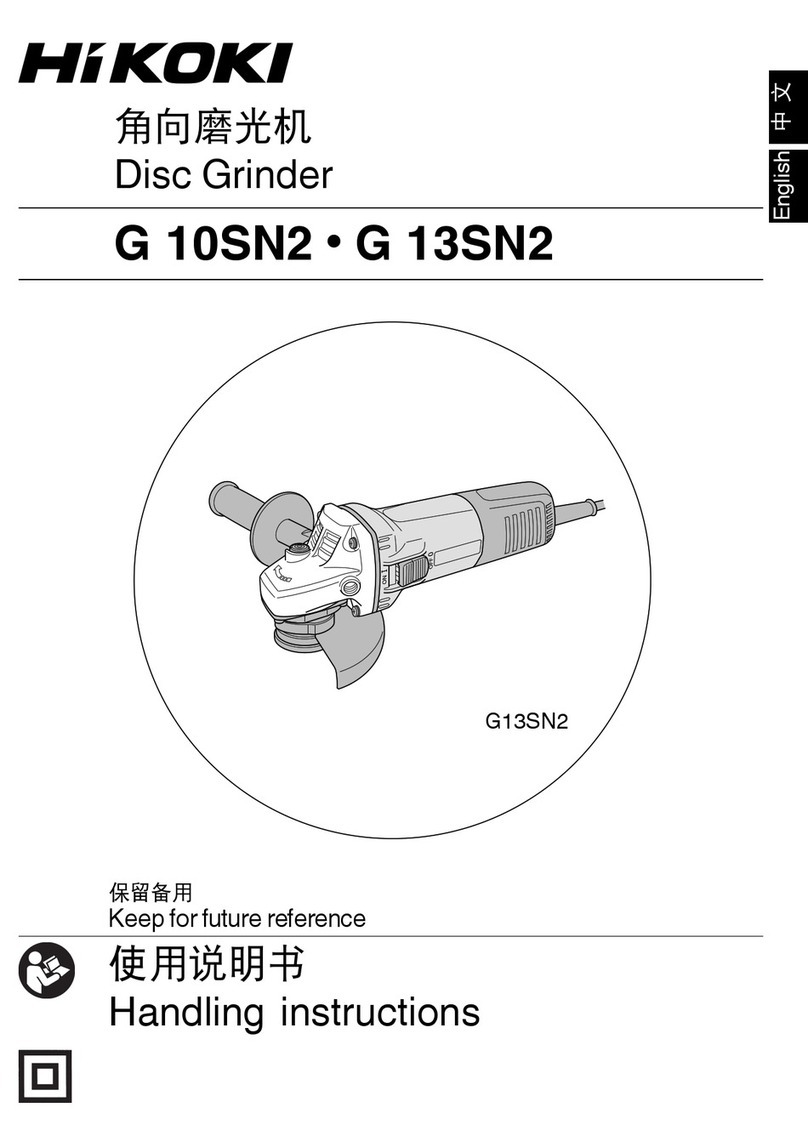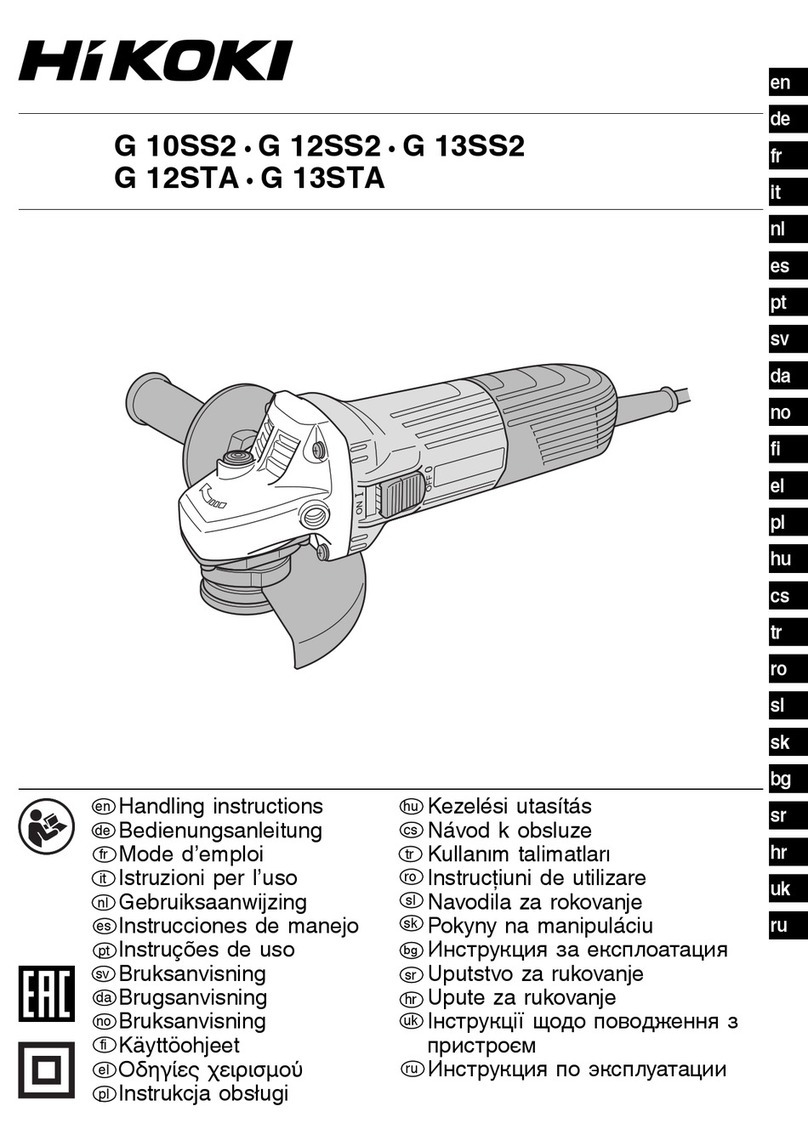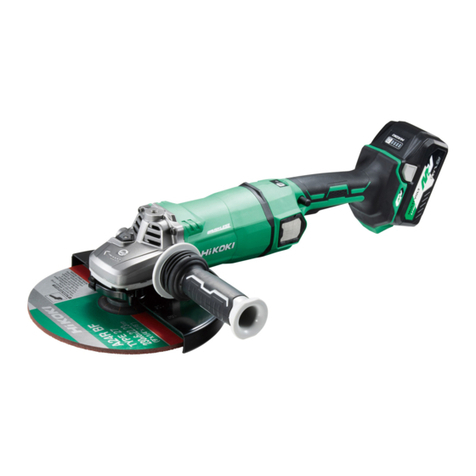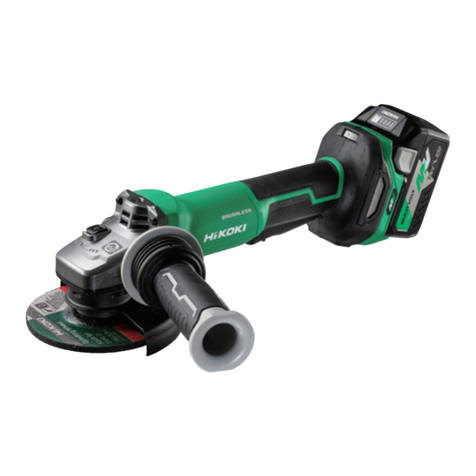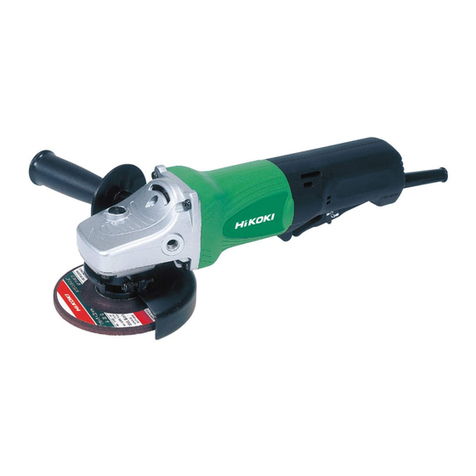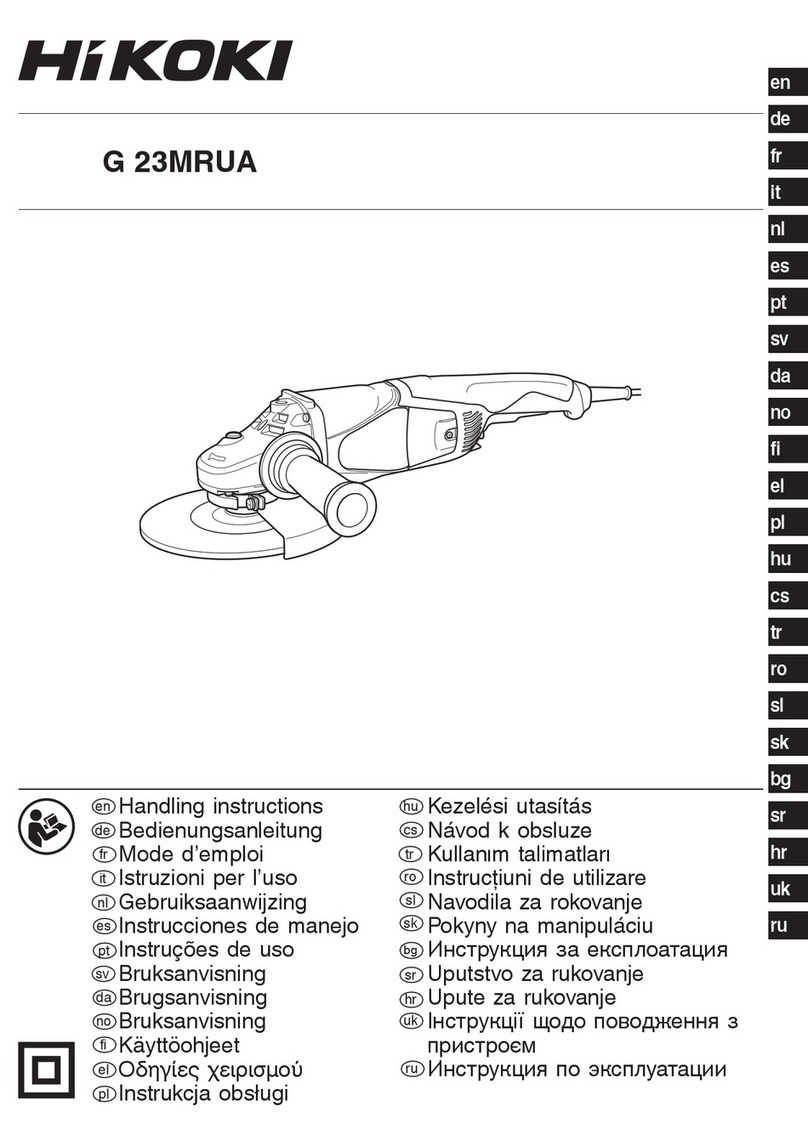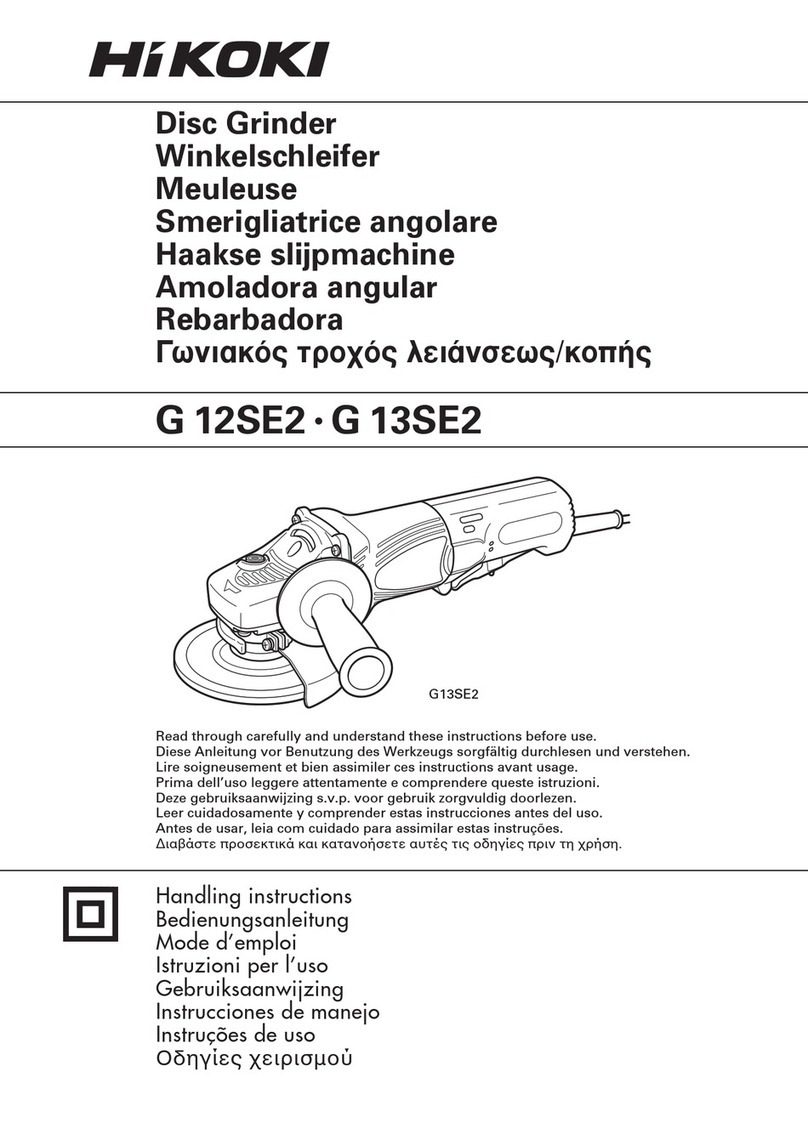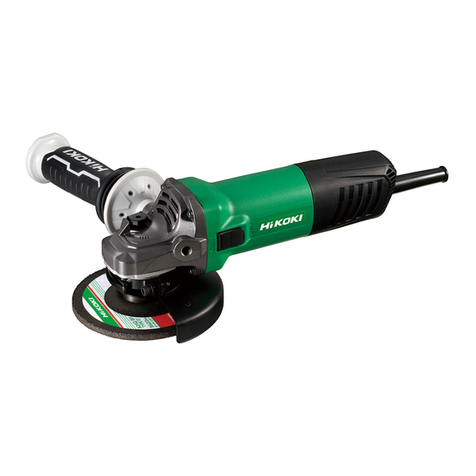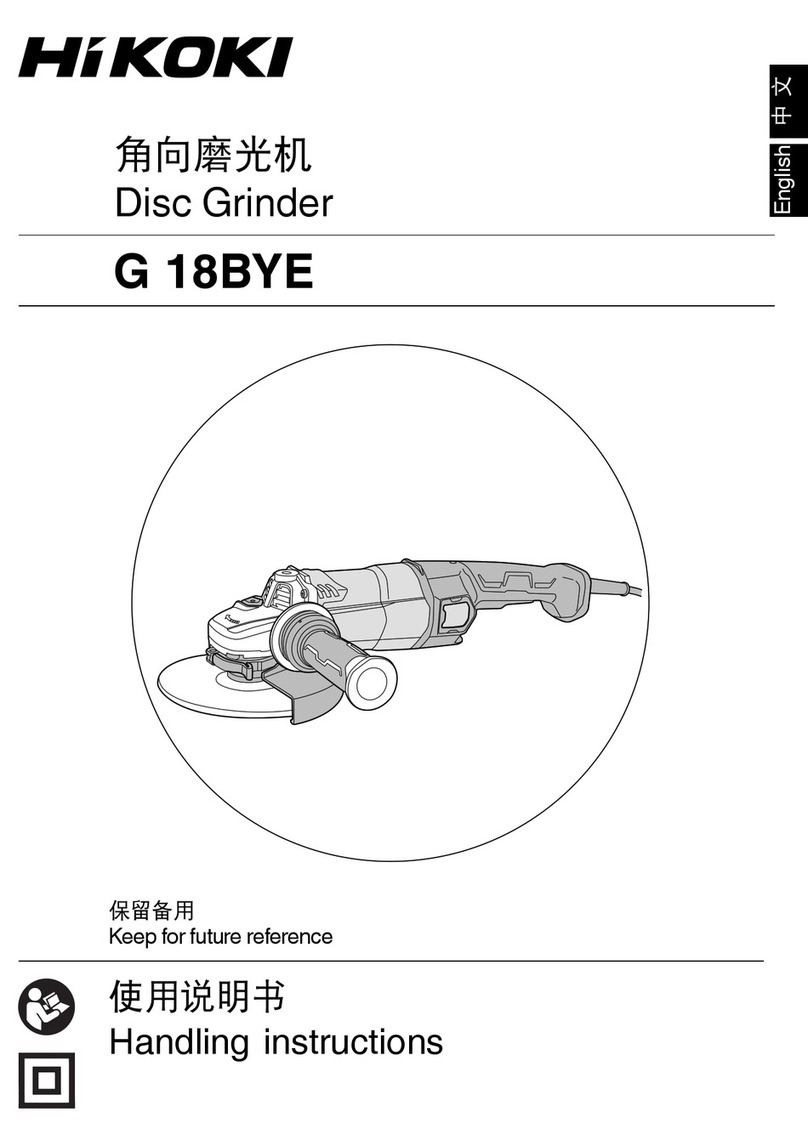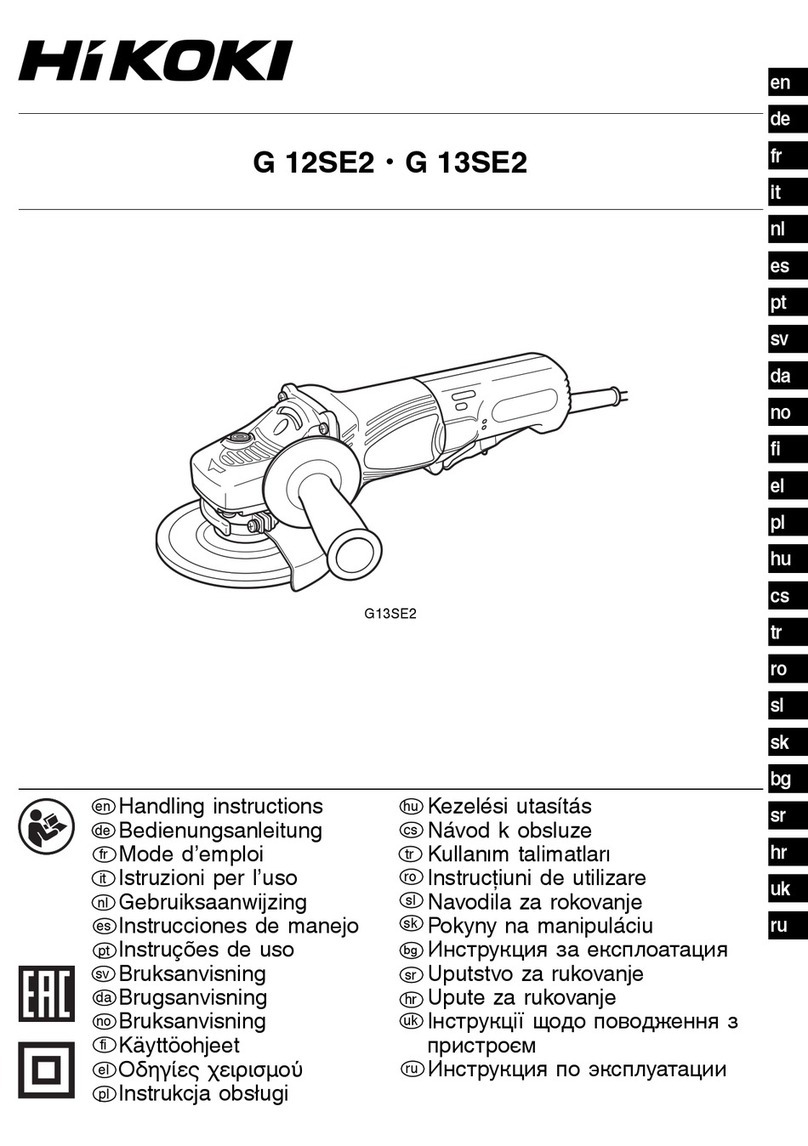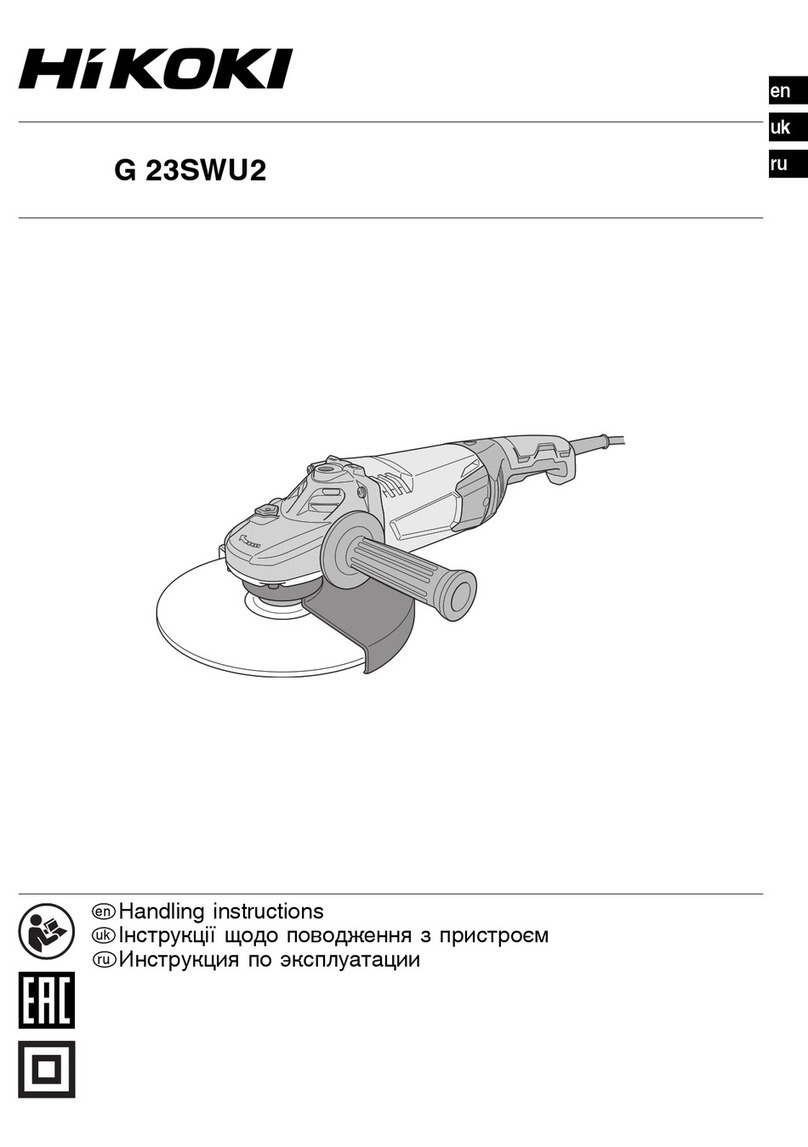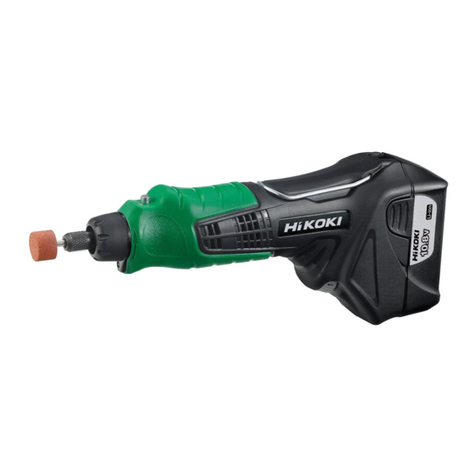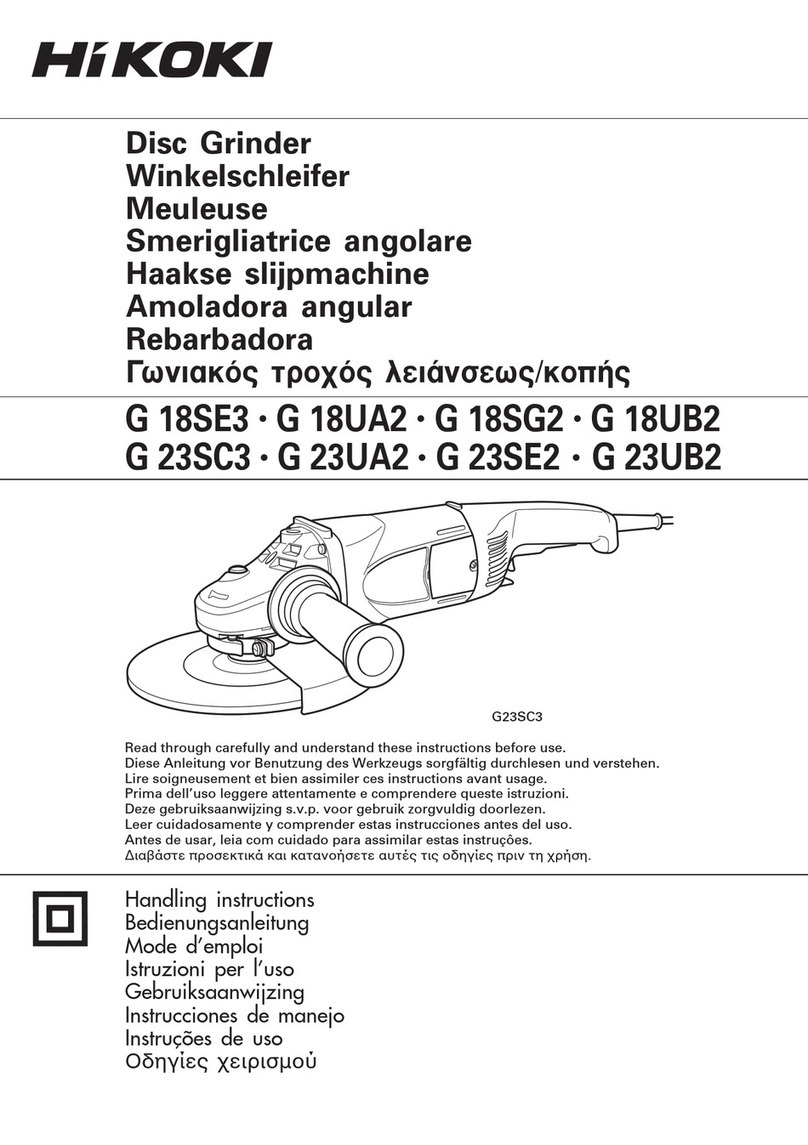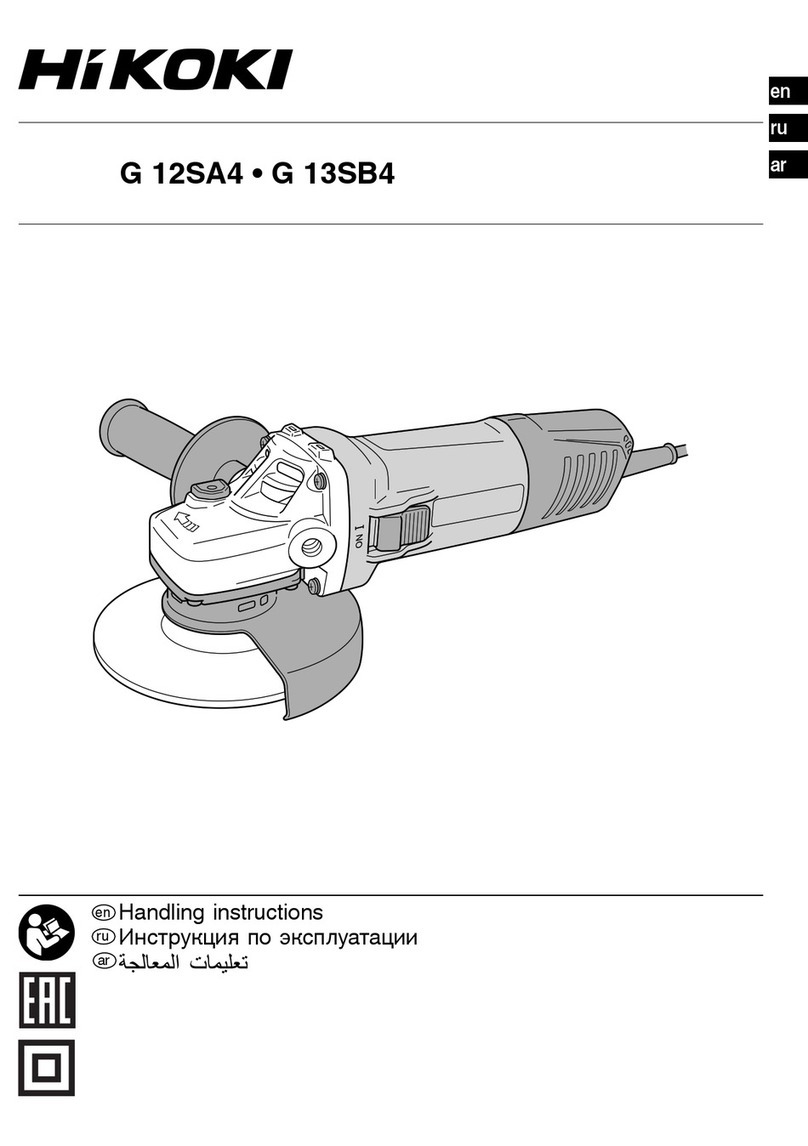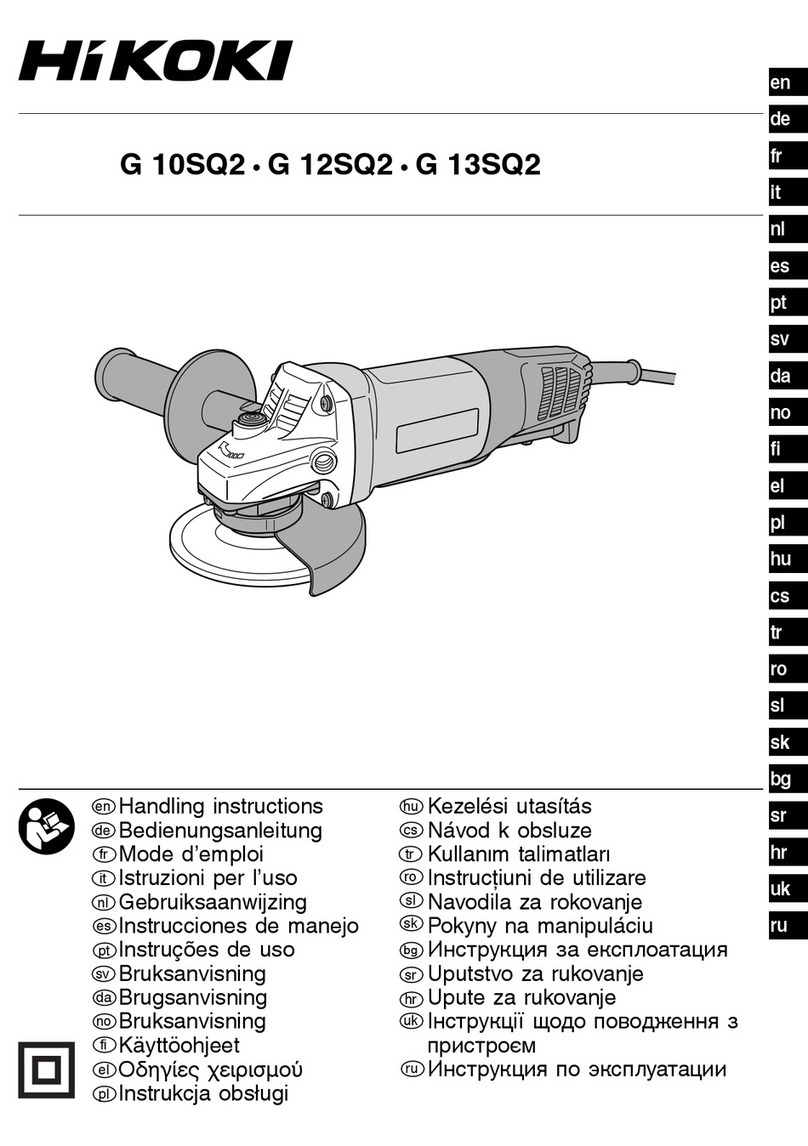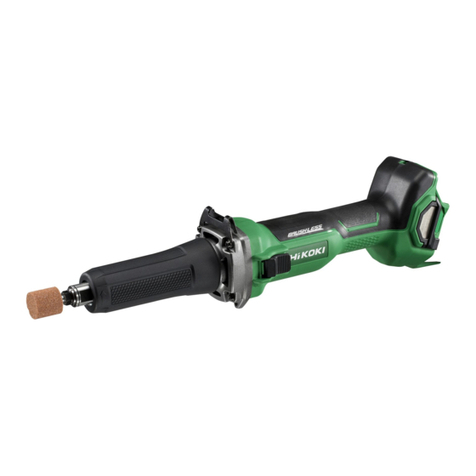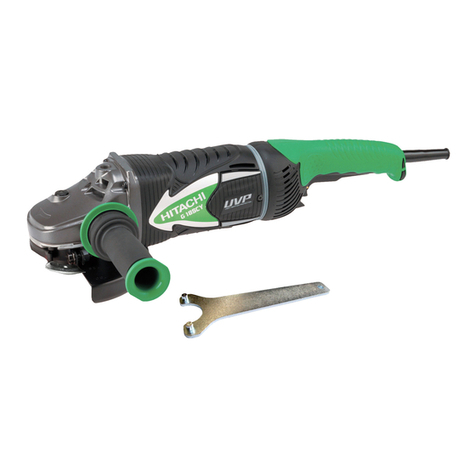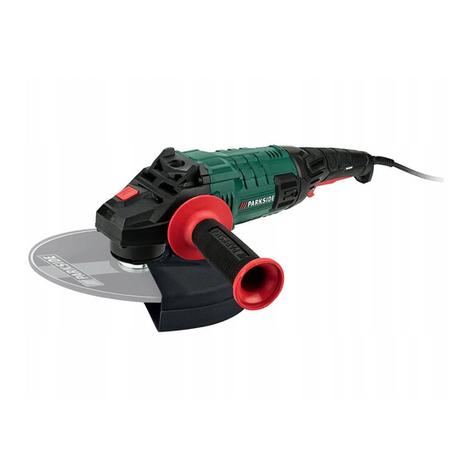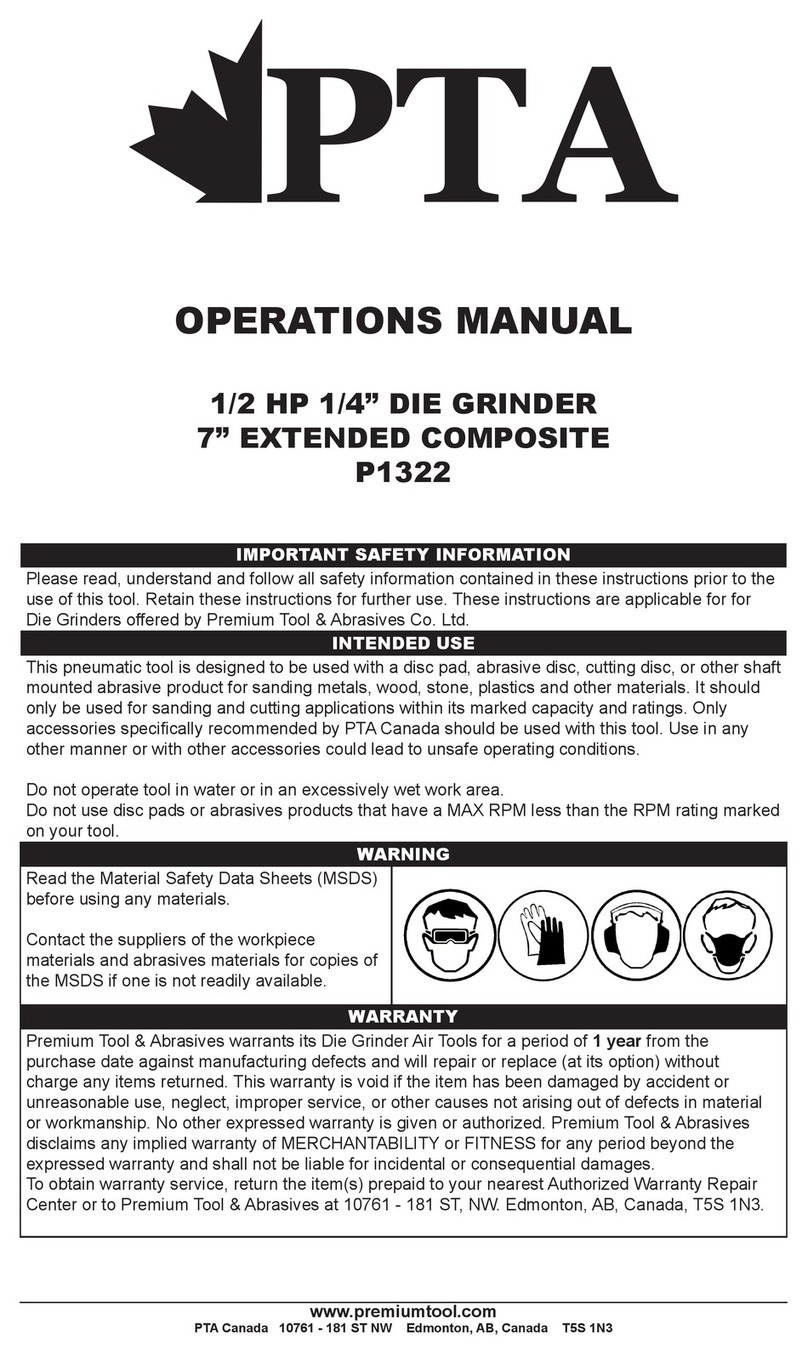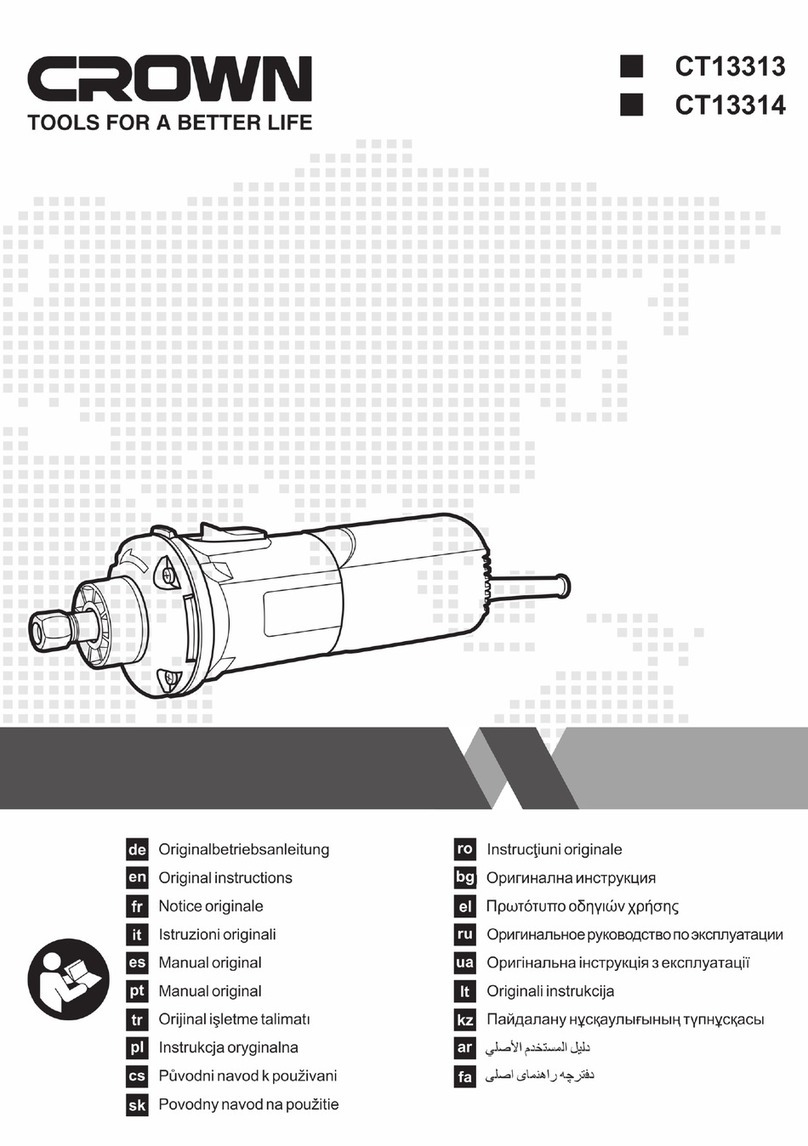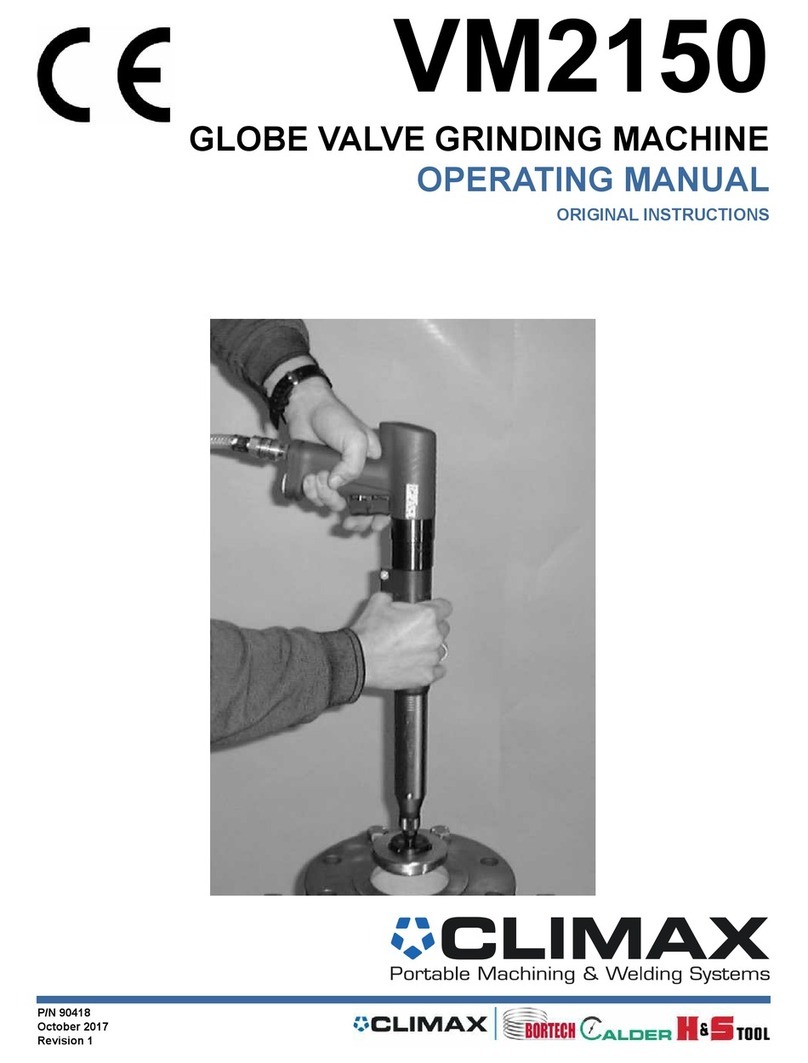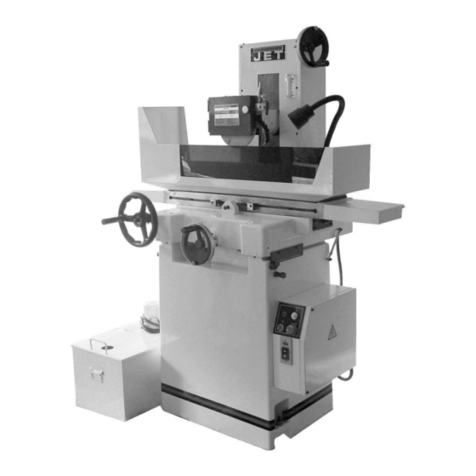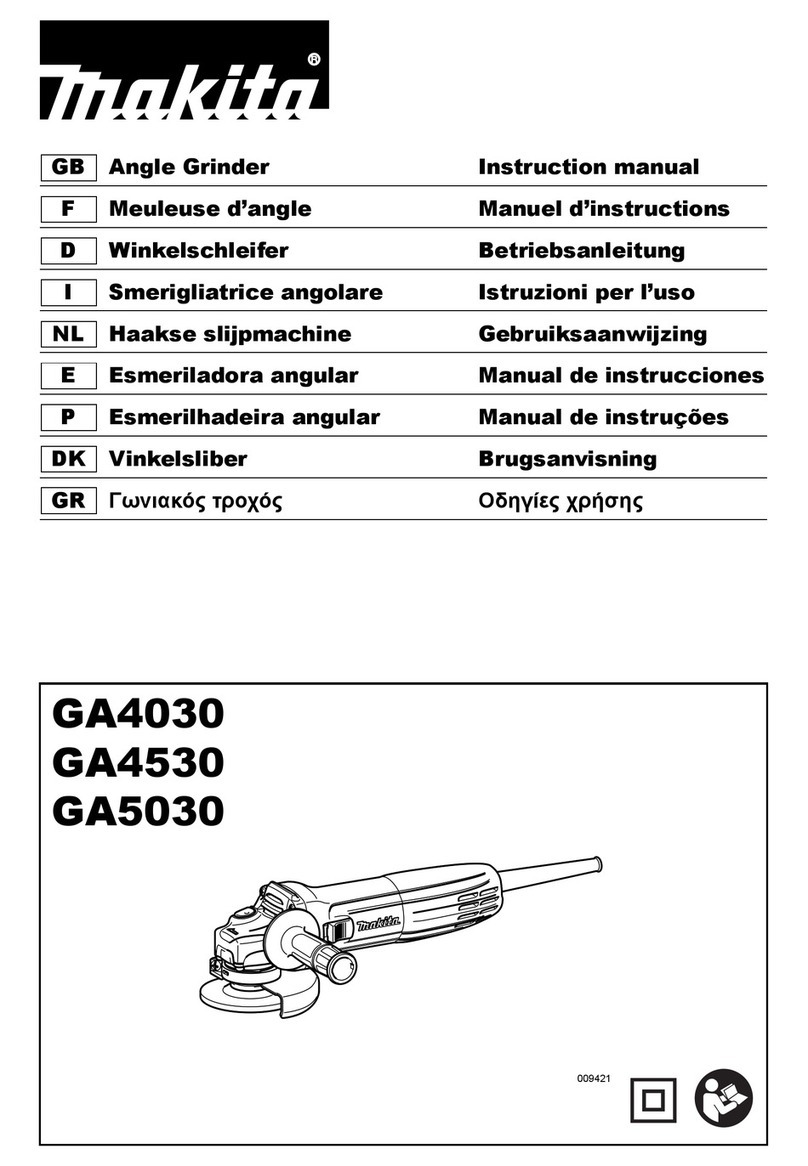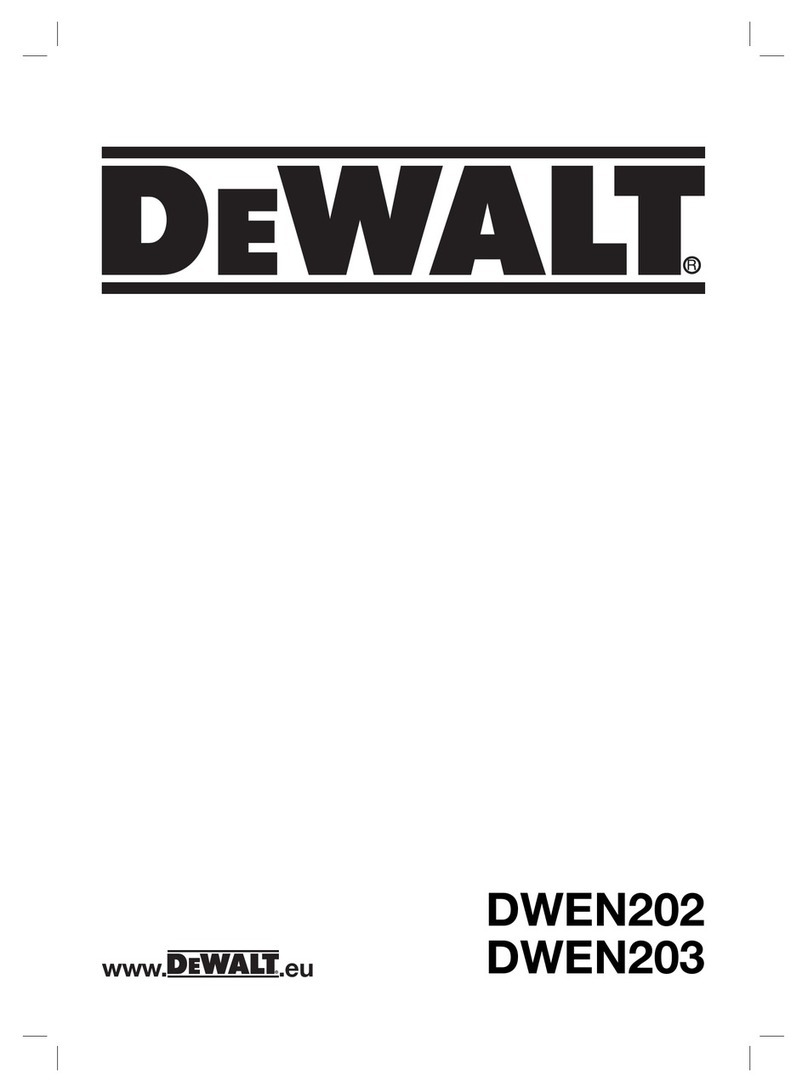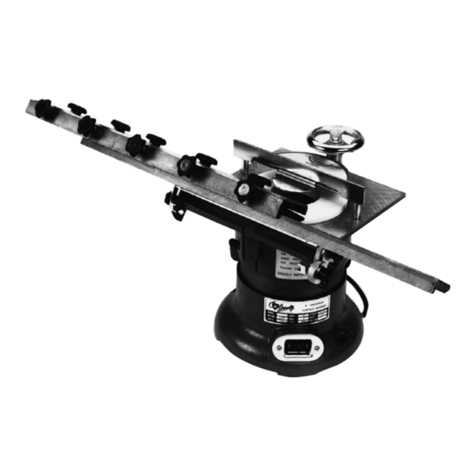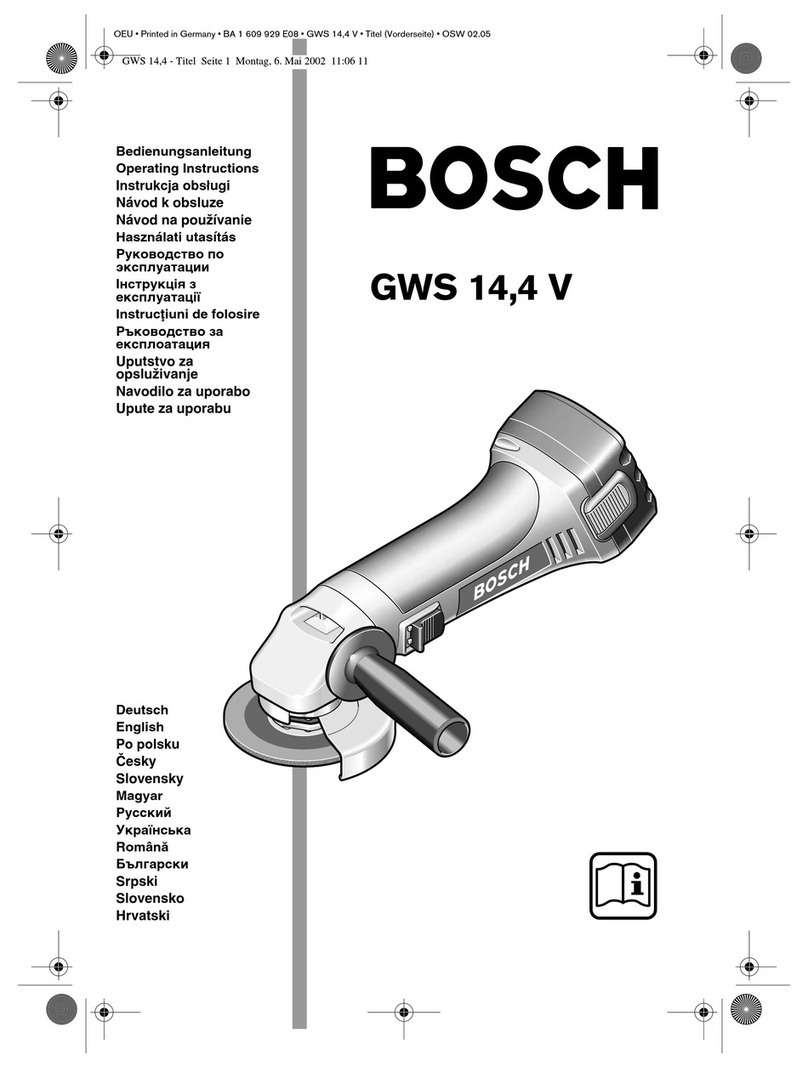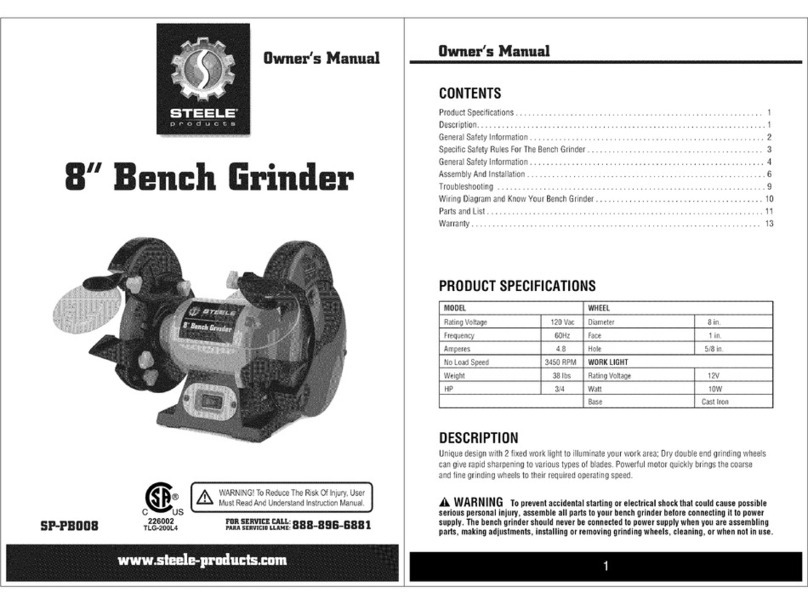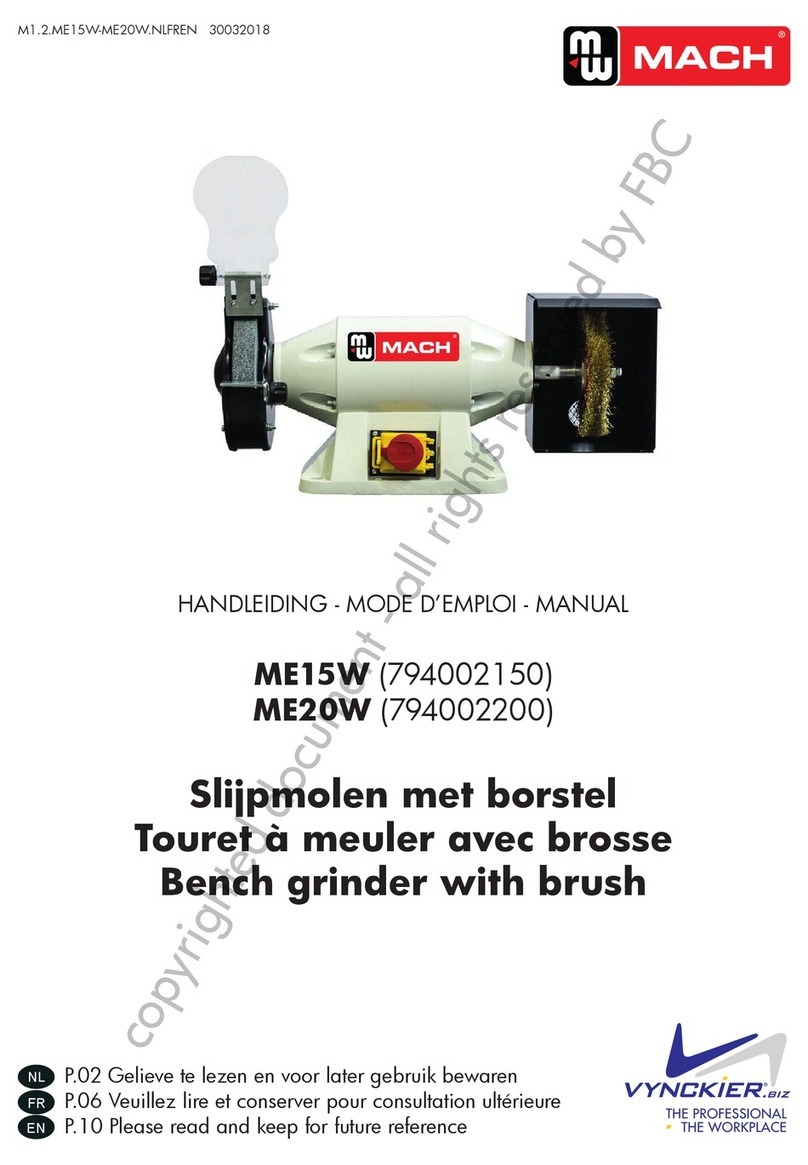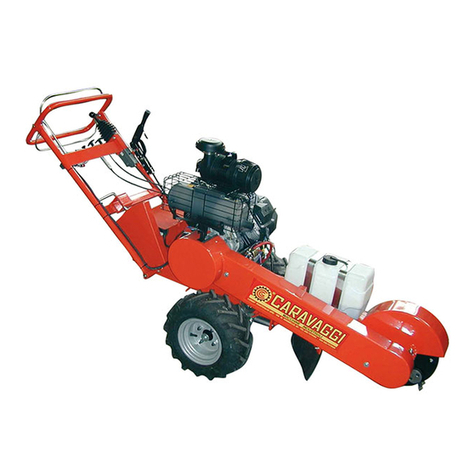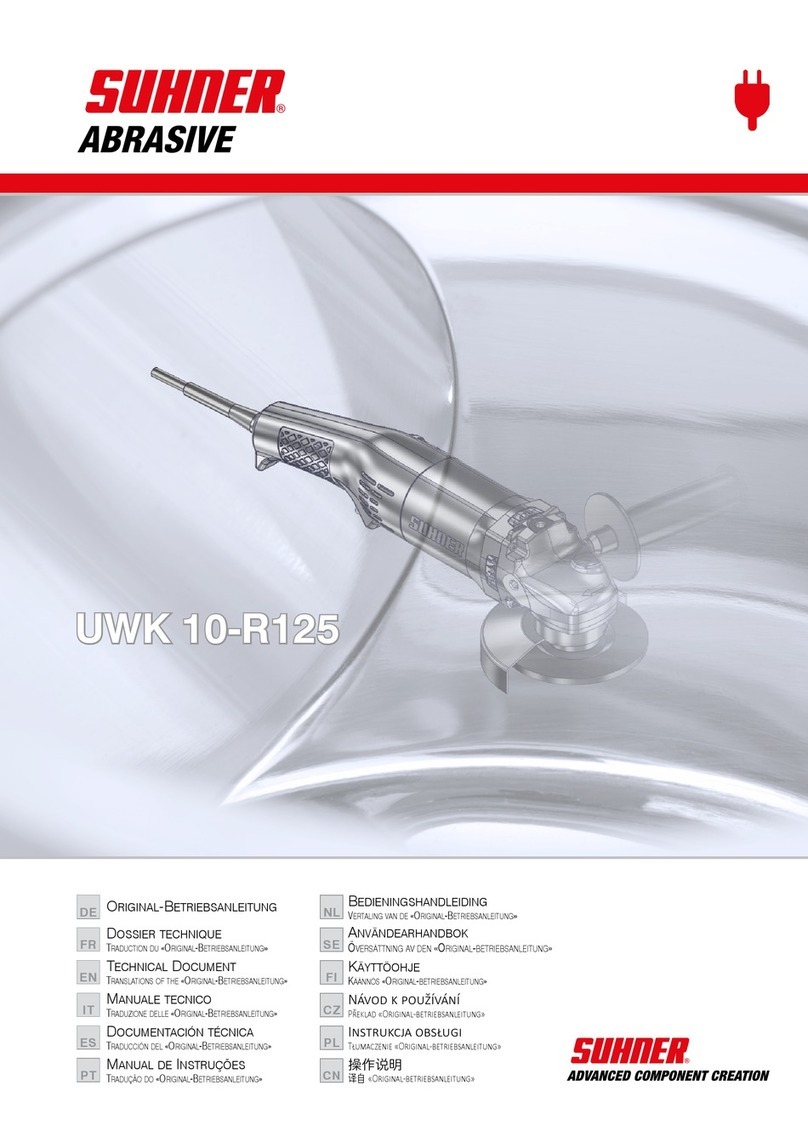
5
SAFETY WARNINGS SPECIFIC FOR GRINDING
AND ABRASIVE CUTTING-OFF OPERATIONS
a) Use only wheel types that are recommended for
your power tool and the specific guard designed for
the selected wheel.
Wheels for which the power tool was not designed
cannot be adequately guarded and are unsafe.
b) The grinding surface of centre depressed wheels
must be mounted below the plane of the guard lip.
An improperly mounted wheel that projects through the
plane of the guard lip cannot be adequately protected.
c) The guard must be securely attached to the power
tool and positioned for maximum safety, so the least
amount of wheel is exposed towards the operator.
The guard helps to protect the operator from broken
wheel fragments, accidental contact with wheel and
sparks that could ignite clothing.
d) Wheels must be used only for recommended
applications. For example: do not grind with the
side of cut-offwheel.
Abrasive cut-offwheels are intended for peripheral
grinding, side forces applied to these wheels may cause
them to shatter.
e) Always use undamaged wheel flanges that are of
correct size and shape for your selected wheel.
Proper wheel flanges support the wheel thus reducing
the possibility of wheel breakage. Flanges for cut-off
wheels may be different from grinding wheel flanges.
f)
Do not use worn down wheels from larger power tools.
Wheel intended for larger power tool is not suitable for
the higher speed of a smaller tool and may burst.
ADDITIONAL SAFETY WARNINGS SPECIFIC
FOR ABRASIVE CUTTING-OFF OPERATIONS
a) Do not “jam” the cut-offwheel or apply excessive
pressure. Do not attempt to make an excessive
depth of cut.
Overstressing the wheel increases the loading and
susceptibility to twisting or binding of the wheel in the cut
and the possibility of kickback or wheel breakage.
b) Do not position your body in line with and behind
the rotating wheel.
When the wheel, at the point of operation, is moving
away from your body, the possible kickback may propel
the spinning wheel and the power tool directly at you.
c) When wheel is binding or when interrupting a cut
for any reason, switch offthe power tool and hold
the power tool motionless until the wheel comes to
a complete stop. Never attempt to remove the cut-
offwheel from the cut while the wheel is in motion
otherwise kickback may occur.
Investigate and take corrective action to eliminate the
cause of wheel binding.
d) Do not restart the cutting operation in the workpiece.
Let the wheel reach full speed and carefully re-enter
the cut.
The wheel may bind, walk up or kickback if the power tool
is restarted in the workpiece.
e) Support panels or any oversized workpiece to
minimize the risk of wheel pinching and kickback.
Large workpieces tend to sag under their own weight.
Supports must be placed under the workpiece near the
line of cut and near the edge of the workpiece on both
sides of the wheel.
f) Use extra caution when making a “pocket cut” into
existing walls or other blind areas.
The protruding wheel may cut gas or water pipes,
electrical wiring or objects that can cause kickback.
GENERAL SAFETY INSTRUCTIONS FOR
GRINDERS
– Check that speed marked on the wheel is equal to or
greater than the rated speed of the grinder;
– Ensure that the wheel dimensions are compatible with
the grinder;
– Abrasive wheels shall be stored and handled with care in
accordance with manufacturer’s instructions;
– Inspect the grinding wheel before use, do not use
chipped, cracked or otherwise defective products;
– Ensure that mounted wheels and points are fitted in
accordance with the manufacturer’s instructions;
– Ensure that blotters are used when they are provided
with the bonded abrasive product and when they are
required;
– Ensure that the abrasive product is correctly mounted
and tightened before use and run the tool at no-load for
30 seconds in a safe position, stop immediately if there
is considerable vibration or if other defects are detected.
If this condition occurs, check the machine to determine
the cause;
– If a guard is equipped with the tool never use the tool
without such a guard;
– When using a abrasive cutting wheel, be sure to remove
the standard accessory wheel guard and attach the
wheel guard with side guard (sold separately);
– Do not use separate reducing bushings or adapters to
adapt large hole abrasive wheels;
– For tools intended to be fitted with threaded hole wheel,
ensure that the thread in the wheel is long enough to
accept the spindle length;
– Check that the work piece is properly supported;
– Do not use cutting offwheel for side grinding;
– Ensure that sparks resulting from use do not create
a hazard e.g. do not hit persons, or ignite flammable
substances;
– Ensure that ventilation openings are kept clear when
working in dusty conditions, if it should become
necessary to clear dust, first disconnect the tool from
the mains supply (use non metallic objects) and avoid
damaging internal parts;
– Always use eye and ear protection. Other personal
protective equipment such as dust mask, gloves, helmet
and apron should be worn;
– Pay attention to the wheel that continues to rotate after
the tool is switched off.
ADDITIONAL SAFETY WARNINGS
1. Ensure that the depressed center wheel to be utilized is
the correct type and free of cracks or surface defects.
Also ensure that the depressed center wheel is properly
mounted and the wheel nut is securely tightened.
2. To prolong the life of the machine and ensure a first
class finish, it is important that the machine should not
be overloaded by applying too much pressure. In most
applications, the weight of the machine alone is sufficient
for effective grinding. Too much pressure will result in
reduced rotational speed, inferior surface finish, and
overloading which could reduce the life of the machine.
3. The wheel continues to rotate after the tool is switched off.
After switching offthe machine, do not put it down until the
depressed center wheel has come to a complete stop.
Apart from avoiding serious accidents, this precaution
will reduce the amount of dust and swarf sucked into the
machine.
4. When the machine is not use, the power source should
be disconnected.
000BookPDA-125M.indb5000BookPDA-125M.indb5 2019/12/1816:11:522019/12/1816:11:52
